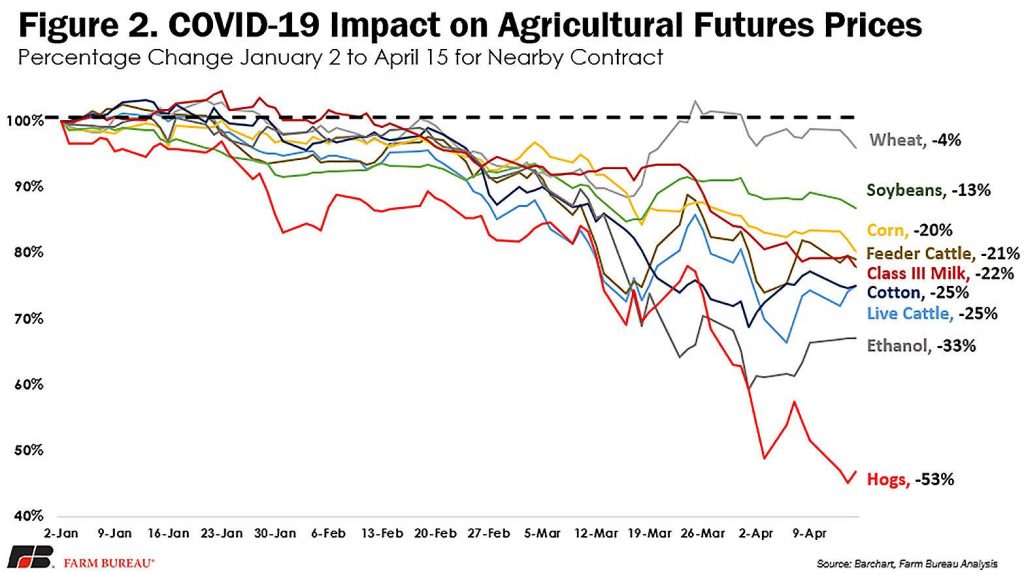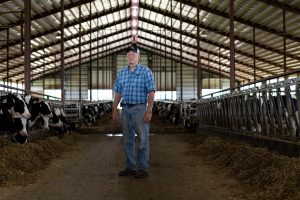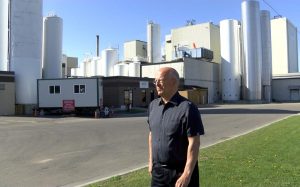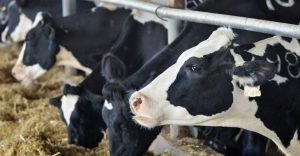
Meanwhile, Agriculture Secretary Sonny Perdue announced initial details of a $19 billion COVID relief program for agriculture. The package includes $16 billion in direct support for farmers and $3 billion in USDA food purchases.
The information is very preliminary and could change as more details emerge but the Dairy and Food Market Analyst says, “If USDA is right in its cost estimates, we believe there is enough money to bridge dairy farmers through this restaurant-closure crisis. However, processors are another story. There appears to be no aid for them.”
The DFMA reports that dairy farmers will receive payments totaling $2.9 billion, or an average of about $85,000 per farm or $5.20 per hundredweight for all milk that will be produced in second quarter 2020. There will be two tranches of payments, the first in May or June, and payments will be capped at a maximum of $125,000 per individual.
The DFMA’s Matt Gould believes farms with more than about 500 cows will receive the maximum payout and the remaining 90% of producers will receive less than the $125,000 limit.
USDA will purchase about $3.0 billion on dairy, meat and produce for food banks and initially spend $100 million per month on each of those three categories.
The package does not include reopening the Dairy Margin Coverage program and there was no mention of milk supply restrictions or payments to producers to reduce milk output, nor was there any reimbursement to producers for dumped milk.
Dairy purchases would likely include butter, cheese and fluid milk but Gould cautions that the purchases will not make up for the shortfall in restaurant demand. He estimated in the April 20 “Dairy Radio Now” broadcast that those losses, when added to those from schools and other institutions, approximate 20%. He warned that “as long as restaurants are closed, these government purchases will help, but not resolve the oversupply problem. Milk will continue to be dumped until restaurants reopen and/or producers cut back milk supplies.”
National Milk president and CEO Jim Mulhern praised the package, warning that “federal dairy assistance is critically needed as the nation’s dairy farmers face an unprecedented collapse of markets resulting from the shutdown of much of the economy. The plan announced should provide important relief to some producers, and we look forward to learning more of its details in coming days.”
The International Dairy Foods Association president and CEO, Michael Dykes, called the package “an important first step that begins to bring much-needed relief to the U.S. dairy industry.” He said it’s a “robust good-faith effort to ensure the dairy supply chain remains intact.”
IDFA said “it is pleased to see USDA go beyond traditional programming to streamline the process and forge an important partnership with the private and nonprofit sectors to incorporate underutilized foodservice infrastructure, such as transportation and refrigerated storage, to quickly and efficiently get food to Americans in need. For our dairy processors who have lost their foodservice business, IDFA is grateful that these USDA purchases will go to those most in need of nutritious food and spur demand for additional dairy products.”
Dairy broker HighGround Dairy said “the payments to farmers will be welcome, many of whom will see the lowest milk checks in more than a decade by May.”
But HighGround also warned that “ultimately, these actions will not solve the oversupply issues facing the country. USDA dairy product purchases could increase prices from recent lows, but these actions are not enough to return milk prices to profitable levels. A $125,000 payment cap will not go far to help larger farms who are likely hemorrhaging cash, but will infuse much needed cash into smaller dairies.”
USDA issued solicitations Monday in response to the Families First Coronavirus Response Act. The notices included 2.2 million pounds of butter, 3.8 million pounds of cheese shreds and 2.4 million pounds of process cheese for June delivery.
Western United Dairymen points out that, for an average California dairy of 1,200 cows producing an average 2,000 pounds per month, the maximum payment for a 3-month period would be $1.74 per hundredweight. Preliminary details point to a signup period in early May, with payments in late May or early June. Operations will be allowed $125,000 maximum per commodity, so diversified operations would be able to choose a second commodity to cover under this program.”
“In light of the shortcomings,” WUD says “it will be mobilizing to make a strong case why the second round of payments expected for July should come higher as the COVID-19 continues to paralyze supply chains and deteriorate demand.”
March milk up 2.4%
Almost adding insult to injury, the Agriculture Department reported March milk output at 18.3 billion pounds in the top 24 producing states, up a bearish 2.4% from March 2019.
Plummeting dairy prices, due to the effects of the COVID pandemic, come at the time of the year that milk output typically increases. Devastated farm profit margins will no doubt be reflected in future milk production reports.
Output in the 50 states totaled 19.26 billion pounds, up 2.2% from a year ago. Cow numbers totaled 9.38 million head, up 5,000 from February and 47,000 above a year ago. Output per cow averaged 2,053 pounds, up 34 pounds from a year ago, or 1.7%.
California output was up 1.3% from a year ago. Cow numbers were down 3,000 head but output per cow was up 30 pounds. Wisconsin was down 0.1% on 10,000 fewer cows; however, output per cow was up 15 pounds.
Texas again posted the biggest gain, up 8.6%, thanks to 33,000 more cows and a 55-pound gain per cow.
Idaho was up 5.2%, on 29,000 more cows and a 10-pound gain per cow.
New York was up 2.1%, thanks to a 45-pound gain per cow offsetting a loss of 1,000 cows.
Minnesota was up 1% despite a loss of 3,000 cows. Output per cow was up 30 pounds.
Michigan was up 2.3% on 3,000 more cows and a 35-pound gain per cow.
New Mexico was up 2.4% on 10,000 more cows offsetting a 15-pound drop per cow.
Oregon was up 2.3%, thanks to 3,000 more cows offsetting a 5-pound drop per cow.
Pennsylvania managed a 2% increase, thanks to a 75-pound gain per cow, but cow numbers were down 10,000.
Washington State was up 3.2%, on 3,000 more cows and a 40-pound increase per cow.
GDT drops 4.2%
Fat and powder weighed heavily on this week’s Global Dairy Trade auction, even as butter buoyed the last event, ending five previous sessions of decline. The weighted average of products offered Tuesday fell 4.2%, after inching up 1.2% on April 7.
The losses were led by anhydrous milkfat, down 7.0%, following a 0.4% gain last time. Butter was down 3.6%, after leading the gains April 7 with a 4.5% uptick. Skim milk powder was down 4.9%, following a 0.8% slippage, and whole milk powder was down 3.9% after gaining 2.1%.
Lactose was up 12.0%, which followed a 4.4% rise last time, and GDT Cheddar was up 1.9%, after inching 0.2% higher last time.
FC Stone equated the GDT 80% butterfat butter price to $1.8221 per pound U.S., down 6.4 cents from the last event. CME butter closed Tuesday at $1.1850.
GDT Cheddar cheese equated to $2.0319 per pound, up 3.8 cents, and compares to Tuesday’s CME block Cheddar at a pathetic $1.0075. GDT skim milk powder averaged $1.0798 per pound, down from $1.1403 last time.
Whole milk powder averaged $1.2278, down from $1.2793. CME Grade A nonfat dry milk closed Tuesday at 83.50 cents per pound.
Prices crippled
Considering the sharp declines of the past three to four weeks one would think dairy prices had nowhere to go but up the week after Easter but most didn’t, though there were signs of hope.
Cheddar cheese fell to $1 per pound last Wednesday, the lowest CME price since February 2003, but closed Friday at $1.0125, down 4.25 cents on the week, the fifth week of decline, and 65.5 cents below a year ago.
The barrels climbed to $1.0325 Wednesday but relapsed and closed Friday at $1.0050, still up a half-cent on the week but 51 cents below a year ago. Seven cars of block and 34 of barrel were traded last week at the CME.
The blocks lost a half-cent Monday but were unchanged Tuesday, holding at $1.0075, as traders absorbed the morning’s GDT and anticipated the afternoon’s March Milk Production report and Wednesday’s March Cold Storage data.
The barrels crept up 0.75 cents Monday and stayed there Tuesday at $1.0125.
Midwest cheese producers continue to report that food service accounts are very slow. Retail-based production is busy and some plant managers say retail ordering is busier week to week but still lower compared to previous years.
Milk remains plentiful, with many loads being dumped. Cheese production is still busy with the abundant milk supply and prices are steeply discounted. Cheese inventories continue to grow and cold storage space is becoming a concern.
Western inventories are also growing, especially for cheeses that go to food service, while inventories of processors who primarily serve the retail sector are “tight to balanced.” Cheese sales are generally strong for retailers, but low for other channels. Transportation costs have increased since the beginning of COVID-19 as refrigerated containers were hard to find for a time.
Butter fell to $1.14 per pound last Wednesday, lowest it has been since February 2009, but “rallied” to close Friday at $1.1875, still 6 cents lower on the week and $1.0950 below a year ago.
Monday’s butter was up 1.25 cents but gave back 1.5 cents Tuesday, slipping to $1.1850.
East region butter facilities are maintaining relatively high output as surplus cream is plentiful. Manufacturers have moved on from the much-needed holiday retail sales but struggles continue, with virtually nonexistent sales from food service. Retail orders were somewhat lower last week, with holiday support now past. Some plant managers say that half of their production is going to freezers.
Western butter markets also remain mostly absent of food service orders. Production is active because cream is plentiful and inventories growing. Retail demand, while higher than normal, has receded, according to DMN.
Grade A nonfat dry milk fell to 85 cents per pound last Tuesday, the lowest CME price since Aug. 16, 2018, but closed Friday at 85.50, down 4.25 cents on the week and 14.5 cents below a year ago.
The powder was down 1.5 cents Monday and lost a half-cent Tuesday, backing down to 83.50 cents per pound.
Dry whey closed the week at 39 cents per pound, up 4 cents and a nickel above a year ago.
Monday’s whey was unchanged but it slipped a half-cent Tuesday, to 38.50 cents per pound.






















